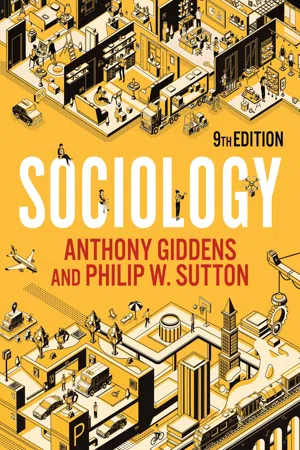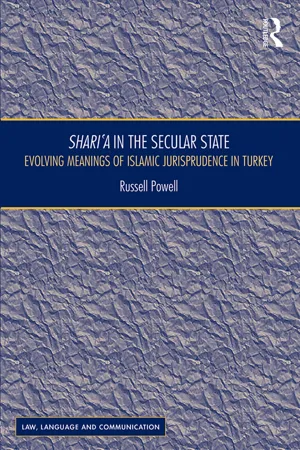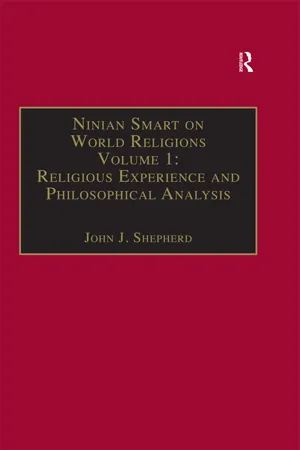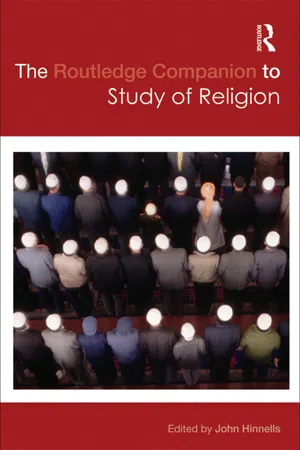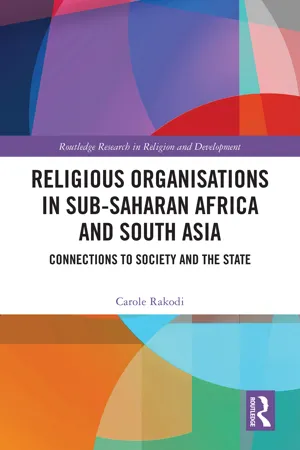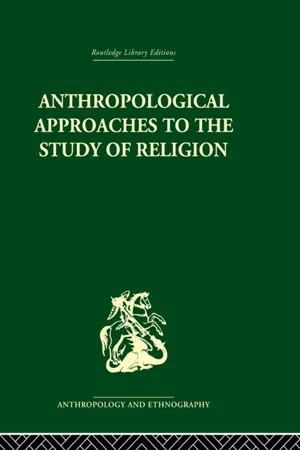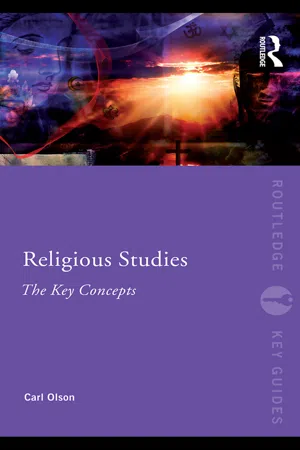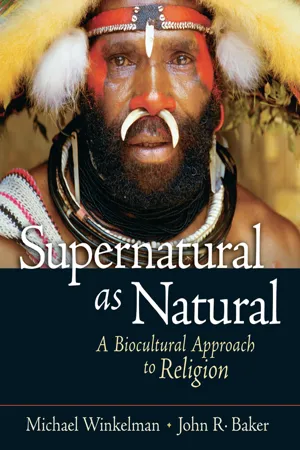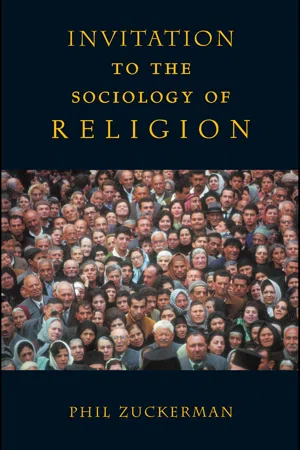Social Sciences
Types of Religion
Religions can be categorized into various types based on their beliefs, practices, and organizational structures. Some common types include monotheistic religions (belief in one God), polytheistic religions (belief in multiple gods), animistic religions (belief in spiritual beings in nature), and atheistic religions (lack of belief in a deity). These types help to understand the diversity and complexity of religious beliefs and practices across different societies.
Written by Perlego with AI-assistance
Related key terms
10 Key excerpts on "Types of Religion"
- eBook - ePub
- Anthony Giddens, Philip W. Sutton(Authors)
- 2021(Publication Date)
- Polity(Publisher)
The sociology of religion places special demands on our sociological imagination as we look to understand the diversity of beliefs and rituals found in human societies. This means we have to be sensitive to the ideals that inspire profound conviction in believers, yet at the same time we must be relatively detached from our personal beliefs. Sociologists confront ideas that seek the eternal, while recognizing that religious groups also pursue very mundane goals, such as acquiring finance or gaining followers. We also need to recognize the diversity of religious beliefs and modes of conduct and to probe into the nature of religion as a general social phenomenon.What is religion?
Defining religion seems to be such a simple task as to merit no deep thought. Religions are commonly defined by a belief in God or gods and perhaps an afterlife, but they also involve worship in religious buildings – temples, churches, synagogues or mosques – and doing ‘religious things’ such as praying and eating or not eating certain foods. For sociologists trying to set limits to their field of study, reaching general agreement on such a basic matter has proved extraordinarily difficult. Indeed, Aldridge (2013: 22) argues that ‘We cannot expect to agree on a definition and then debate matters of substance, since matters of substance are built into any definition. There is not, and never will be, a universally agreed definition of religion.’One reason for this is that sociology contains numerous theoretical perspectives, and these differ in how they construe the nature of social reality. As a consequence, they also disagree about how that reality can and should be studied. For example, many macro-level studies adopt a realist view which sees religion as a fundamental social institution that transmits values, a moral code and norms of behaviour across generations. Hence ‘religion’ exists objectively and has real effects on individuals. Alternatively, several other micro-level studies are rooted in a more social constructionist position, which focuses on the ways in which what constitutes ‘religion’ is continually reproduced and changed in everyday interaction processes. - eBook - ePub
Shari`a in the Secular State
Evolving Meanings of Islamic Jurisprudence in Turkey
- Russell Powell(Author)
- 2016(Publication Date)
- Routledge(Publisher)
1 Religion in contextFrom the Latin, “religare,” religion refers to “binding back,” usually in the sense of connecting with the divine. However, not all scholarly definitions of religion imply divinity or even spirit. Three of the principal categories of theories defining religion are first, religion in its metaphysical or theological sense (e.g., the underlying truth of the existence of God, the dharma, etc.); second, religion as it is psychologically experienced by people (e.g., the feelings of the religious believer about divinity or ultimate concerns, etc.); and third, religion as a cultural or social force (e.g., symbolism that binds a community together or separates it from other communities). Definitions of religion typically begin by assuming one of these approaches, although some blend aspects of two or three. While understanding the first category, the metaphysical or theological, is important for context and is addressed by the data analyzed in Chapter Five , the qualitative data discussed in Chapters Six and Seven focus on the second and third categories (the personal and the social experiences of religion). This first chapter also addresses the relationship between religion and the state and the idea of secularism, which is explored further in Chapter Four - eBook - ePub
Ninian Smart on World Religions
Volume 1: Religious Experience and Philosophical Analysis
- John J. Shepherd(Author)
- 2017(Publication Date)
- Routledge(Publisher)
In so far as religious experience and its related beliefs is present, there is the possibility of doing ‘the psychology of religion’. Again, the nature and functions of myth are in part illuminated by anthropology. (Matters of the truth of doctrine and myth are crucial to theology and philosophy—see p. 22 ; but the main emphasis of the present article is not on this area of enquiry.) It is possible now to say something, admittedly crude, about kinds of theory in regard to religion. There are those which are, so to say, intra-religious (explaining one feature of religion in terms of another)—for example, trying to show systematic connections between types of religious experience and types of doctrine; and there are those which are extra-religious (explaining a feature of religion through recourse to some feature or features of human existence which is not specifically religious)—for example, Freud’s theory of the genesis of the Father-figure in religion. There are also mixed theories, exhibiting the interplay between religious and non-religious factors (perhaps Max Weber’s classical work in the sociology of religion comes into this category). Some proponents of the phenomenology of religion, have strongly upheld the autonomy of religious categories and therefore of the study of religion. This is a way of resisting a totally reductionist view of the scientific study of religion and has a certain justification, in my view; for whatever one might say about the genesis of, for example, the sense of the numinous, as depicted by Otto (see p. 181 below), there can be little doubt that this sense has to enter into some explanations of human conduct, etc., from the religious side. That is, religion has its own dynamic, even though it be affected, as we all know, by the dynamics of other aspects of human existence - eBook - ePub
- John Hinnells(Author)
- 2009(Publication Date)
- Routledge(Publisher)
The final preliminary definition to be considered is that of religion. This too is a contested concept, as other chapters in this volume make clear. For the purposes of this chapter it is sufficient to identify religion in a low-key, non-technical way through a number of generally accepted examples. Religion, it is assumed, includes such ways of shaping human life in communities and their associated traditions as are exemplified by Buddhism, Christianity, Hinduism, Islam and Judaism. This is not an exclusive definition; it simply limits the scope of reference of this chapter, while allowing that much of what it says could be applied to other instances of religion and to traditions (such as cultures, philosophical schools, or secular worldviews and ways of living) which might not be included in a particular definition of religion. It is also a definition that does not entail any particular position on such disputed matters as the essence, origin and function of religion.Before focussing on the discipline of academic theology it is important first to say more about theology and its analogues in the broadest sense.Theology beyond the academy
The religious communities mentioned in the definition above all place a high priority on learning and teaching. An immense amount of time and energy is spent on such activities as the study and interpretation of key texts, and instruction in tradition, prayer and ethics. Much learning happens through imitation, and the adoption of habits of thought, imagination, feeling and activity, which are assimilated through participation in a community’s life. Such learning and teaching have been important in helping those traditions survive and develop over many generations.It is, however, never simply a matter of repeating the past. The texts and commentators raise questions that require consideration afresh by each generation; each period and situation raises new issues; there are conflicts, splits and challenges from inside and outside the tradition. Even when the verdict is that what is received from the past ought to be repeated and imitated as closely as possible in the present, that is a decision which cannot be arrived at without some deliberation. Thinking about appropriate ways to understand and act in the context of a particular tradition comes under my broad definition of theology. Such thought is pervasive and usually informal, and teaching usually aims at turning its basic features into implicit, taken-for-granted assumptions in the light of which questions are faced and behaviour shaped. Yet, because of the many factors which prompt internal and external questioning, explicit thought may also be provoked, and theological inquiry, in the sense described above, may be generated. What is the right interpretation of this text? How should children be educated in this tradition? What is the right response to legal or political injustice? Does God exist? If so, what sort of God? What about death, creation, salvation, gender issues? What, if any, is the purpose of life? How should those with very different traditions and conceptions be treated? Such questions may give rise to theological inquiry. - eBook - ePub
Religious Organisations in Sub-Saharan Africa and South Asia
Connections to Society and the State
- Carole Rakodi(Author)
- 2024(Publication Date)
- Routledge(Publisher)
Rakodi, 2019 ). The elements of the framework, it was suggested, can each be seen as an axis along which differentiation occurs, producing a matrix within which the empirical analyses that followed were placed and drawing attention to the elements that emerged as key to understanding. The same conceptual building blocks are used to develop a framework for the analysis in this volume, with the addition of concepts of the state, government, governance, civil society, organisations and institutions, as explored in the previous chapter. The framework suggested here has a similar basic structure to that outlined, used and refined in the first volume, extended to encompass the domains, dimensions, levels and links relevant to, first, developing an understanding of how religion and sociopolitical organisation are entwined and, second, reviewing the available evidence on how this manifests itself in contemporary Sub-Saharan Africa and South Asia. Some of the methodological issues raised by any attempt to examine the links between religion, societies and states are discussed in the final section, while emerging approaches to increasing understanding of these phenomena are explored in the following chapter, with an assessment of their contribution.Dimensions of the social field
The social sciences seek to understand and explain human society in terms of personal qualities (the characteristics and behaviour of individuals) and social relations (the interactions between people, as individuals and as members of social groups, and between social groups, characterised by more or less formal identities and forms of belonging). Explanations of individual and social behaviour may be sought in the characteristics of individuals and social units (such as households, businesses or voluntary associations), the patterns or regularities identified, and the relationships detected between specific variables or characteristics. However, many social scientists hold that individual views and actions, identities and patterns of social allegiance and behaviour cannot be understood without referring to characteristics of the social system, underlying social structures and wider forces, although views differ on the extent to which these determine human actions (Beckford, 2003 ; Furseth and Repstad, 2006 ).Often, analyses focus on one of these dimensions, but the framework adopted here incorporates all three:- A personal dimension
- Michael Banton(Author)
- 2013(Publication Date)
- Routledge(Publisher)
value systems, an enduring organization of principles by which behavior can be judged on some scale of merit. Religion differs from other institutions in that its three component systems have reference to superhuman beings.Having defined ‘religion’, our next task is to examine the types of explanation that have been offered to account for its existence. First, however, we must answer some elementary questions concerning the nature of anthropological explanation.Explanation in Social AnthropologyWhat do anthropologists attempt to explain? Of what do explanations consist? How do these explanations differ from each other? Once we penetrate beneath our jargon, it appears that always the phenomenon to be explained is (a) the existence of some social or cultural variable, and (b) the variability which it exhibits in a cross-cultural distribution. These statements of course are really one, because the variable ‘exists’ in the range of values which it can assume. If a theory purports to explain the existence of religion, but its concepts are so general or so vague that it cannot explain the variability exhibited by its empirical instances, it is disqualified as a scientific, i.e. a testable, theory.‘Existence’ is an ambiguous term. In asking for an explanation for the existence of religion, we might be asking how it came to exist in the first place – this is the question of religious origins – or how it is that it exists (i.e. has persisted) in some ethnographic present. Since a testable, i.e. scientific, theory of religious origins will probably always elude our explanatory net, this paper will be concerned with the persistence, not the origin, of religion.In all of our explanations, to answer the second question, we stipulate a condition or a set of conditions in whose absence the variable to be explained would not exist. Now, to say that any sociocultural variable – religion, for example – ‘exists’ is, in the last analysis, to say that in some society – or, in one of its constituent social groups – a proposition is affirmed, a norm complied with, a custom performed, a role practiced, a spirit feared, etc. In short, the ‘existence’ of a sociocultural variable means that in any sense of ‘behavior’ – cognitive, affective, or motor – there occurs some behavior in which, or by which, the variable in question is instanced. Hence, a theory of the ‘existence’ of religion must ultimately be capable of explaining religious ‘behavior’.- eBook - ePub
- Carl Olson(Author)
- 2010(Publication Date)
- Routledge(Publisher)
Whitehouse identifies two different clusters of variables that have a tendency to be selected in the process of religious transmission. These two modes of religiosity are imagistic and doctrinal, each are depended on and constrained by different selective systems of memory. Through the convergence of analogical precepts and practices, the imagistic mode is transmitted by means of ritual. It becomes impressed on one’s memory through heightened emotion, whereas the doctrinal mode of religiosity represents a codification of knowledge, and becomes a coherent collection of beliefs, which is transmitted by repetitive instruction and customary ritual performance.TYPES OF DEFINITIONS OF RELIGION
In summary, definitions of religion manifest five general types: experiential, substantive, functionalist, family resemblance, and postmodern. The experiential definition attempts to isolate a primary religious experience and construct a theory around it (Otto’s idea of the holy and cognitive science are good examples). The substantive definition seeks to identify a central belief, such as a belief in spiritual beings, as the basis of a definition. A functionalist position seeks to discern how religion operates in the life of a society, whereas the family resemblance position looks for overlapping similarities, such as theoretical (beliefs, myths, and doctrines), practical (rites and moral codes), social (institutions, social behavior, and sacred personages), and experiential (emotions, visions, or trances) aspects. The postmodern position stresses the unstable and ambiguous nature of religion.Another way to classify these various definitions is through the distinction between polythetic and monothetical approaches. The former views no particular aspect of religion as necessary and considers several features as sufficient for the inclusion of a particular aspect to become a member of what is called religion. A good example of the polythetic definition is the family resemblance approach. The monothetical represents a traditional approach to the subject that insists that all characteristics are necessary for a particular aspect to be included as part of religion by insisting on its substantive nature. By describing what religions do, this type reflects a functionalist position. - eBook - ePub
Supernatural as Natural
A Biocultural Approach to Religion
- Michael Winkelman, John R. Baker(Authors)
- 2015(Publication Date)
- Routledge(Publisher)
Religion projects a cosmic order that serves as a general model of the Universe, and then socializes human beings to help to ensure that people’s morals, emotions, and judgments conform to these ideals. Symbol System. Religion expands the functions of symbols beyond their ordinary capacities. Symbols normally refer to things that we can see and touch, but in the context of religion, symbols are used to refer to things that we may never see or touch and even to things that we may be unable to experience or conceptualize. The symbols of religion not only depict Gods as social beings, but also draws on an interrelated set of symbols—a model of the Universe—that provides explanations for many aspects of human existence. Religious beliefs embody models for psychological (personal) and social reality. The norms, values, beliefs, and requirements of religion play a fundamental role in shaping individual social and psychological development. Consequently, one fundamental effect of religion is to teach individuals to understand the Universe. Moods and Motivations. Religion is one of the most significant cultural systems involved for socializing a person’s “moods and motivations.” Religion both shapes our innate emotional dispositions and elicits new emotional experiences and concerns. One fundamental function of religion is to channel the wide range of possible human developmental patterns into a particular configuration of dispositions involving habits, preferences, skills, attitudes, and motivations. Motivations are a particularly important aspect of religious socialization because they create a persistent tendency for humans to seek certain kinds of experiences and engage in certain kinds of behaviors. Religious socialization normally creates specific expectations regarding moods in different circumstances - eBook - ePub
- Hillary P. Rodrigues, John S. Harding(Authors)
- 2008(Publication Date)
- Routledge(Publisher)
Religionswissen-schaft) and so on, in which the scientific method is applied with varying degrees of rigor. More significantly, many of the early studies display a negative disposition towards religion, which is seen as an aberrant human activity, deriving from perceived weaknesses in the human constitution, such as ignorance, fear, or fantasy. Such pejorative attitudes still persist among a cohort of scientists and social scientists. Religion exists and persists because people misunderstand the laws of nature and how human societies operate (which scientific study will reveal), because they fear the unknown (and there is nothing to fear but fear itself), or because they escape into illusions of their own designs in order to cope with harsh reality. While these explanations and many others certainly hold true in many instances and do contribute to our understanding of religion, most religious studies scholars understand that they do not adequately account for the human religious response. They are therefore regarded as reductionist explanations, since they reduce the complexity of the phenomenon of religion in human societies to overly simplified causes, functions, or effects. It would seem strange, if not absurd, if one were to propose simplistic dismissive rationales for why human beings make music or produce art, why we philosophize, or work. However, religious authorities or attitudes have often stood in the way of scientific endeavors (Galileo’s trial by the Catholic Church, and the ongoing evolution versus creationism debates, are telling examples), occasionally triggering a response in kind by the scientific community.Contemporary sociological approaches
The contemporary period entertains, for the most part, a much more nuanced and embracing approach to the study of religion among social scientists. Attempts at grand theory and universal explanations of causes and functions have yielded to efforts to offer more limited perspectives and insights into religion. To some extent this seeming humility derives from a shifting scientific paradigm and the contributions of postmodern theories in the social sciences. Each scientific observer is “situated,” observing phenomena from a particular vantage point. Their perspectives are not the only, correct, and true ones. Just as relativity theory demonstrates that even a measurement of time by a stationary observer will differ from a measurement by one who is moving, postmodernism suggests that our appraisals about life, the human predicament, and so on are always colored by the particulars of our own conditions. Does this mean that men cannot adequately, and thus should not, study women? Or that Muslims should not study Buddhists? Or that atheists should avoid the study of religion? Of course not! However, it does mean that each study provides only a partial perspective, offering its own valuable, but limited, viewpoints on the items examined. The structure of this text is designed to highlight such an orientation toward the study of religion, introducing students to a variety of perspectives, and implicitly suggesting that exposure to the widest array of disciplinary approaches will enable us to better understand the phenomenon of religion. - eBook - ePub
- Phil Zuckerman(Author)
- 2010(Publication Date)
- Routledge(Publisher)
The Protestant Ethic and the Spirit of Capitalism (2002 [1904]). In this classic study, Weber explores the ways in which specific Protestant/Calvinist religious beliefs played a decisive role in the development of modern western capitalism.4. Sociologists study social patterns .
Do women attend religious services more often than men? Are blacks more likely to believe in the existence of Satan than whites? Do Jews tend to vote more liberal than Christians? Do religious people divorce less frequently than the nonreligious? Sociologists of religion have their work cut out for them in exploring the plethora of patterns that emerge concerning religion in society. The most hotly debated topic within the sociology of religion during the past decade has revolved around a basic question of one particular social pattern: whether or not people are more or less religious today than they were in the past—the matter of secularization (Swatos and Olson 2000; Bruce 1992).5. Sociologists understand that an individual can be truly understood only within his or her sociohistorical context .
To put it simply, an individual can be a member of a particular religion only if that religion exists when he or she does. Furthermore, geography (where a person exists) is key (Park 1994). An individual born in Sri Lanka is much more likely to be Buddhist than an individual born in Honduras, who will most likely be Catholic (O’Brien and Palmer 1993). My friend Kent describes himself as “nothing” in terms of a religious identity. But he isn’t “nothing” in a sociohistorical vacuum. His parents were also “nothing”; they didn’t raise Kent with any particular religious education or involvement. Furthermore, Kent grew up in a largely secular enclave and attended school in west Los Angeles with few overtly religious kids or teachers. Additionally, Kent lives in a time in history and within a culture in which religion isn’t imperative, lack of religion isn’t illegal or suspect, and being “nothing” is considered quite normal. In short, an individual’s personal religious identity (or lack thereof) is greatly influenced by where, when, and among whom that individual lives.
Index pages curate the most relevant extracts from our library of academic textbooks. They’ve been created using an in-house natural language model (NLM), each adding context and meaning to key research topics.
